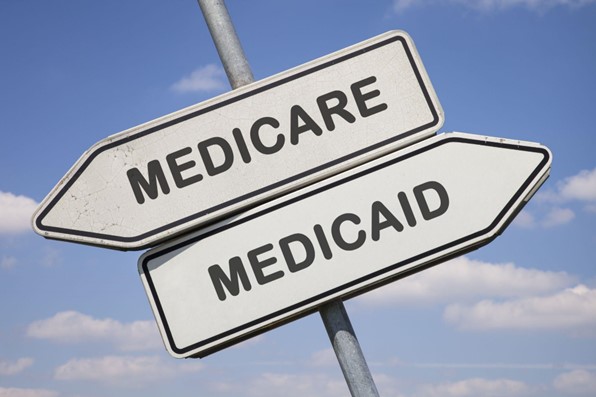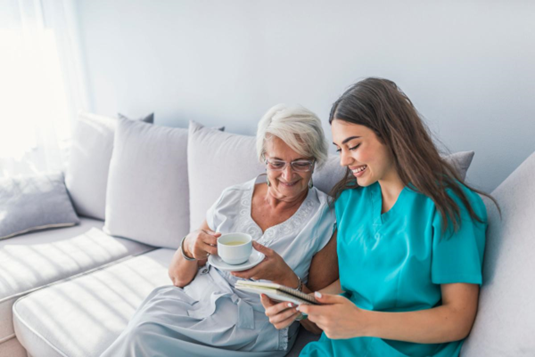Elderly falls are a leading cause of injuries and hospital admissions among seniors, making them a critical issue in geriatric health and wellness. Understanding these statistics is vital for individuals, families, healthcare providers, and anyone involved in the care and well-being of older adults.
This article serves as a one-stop resource for all pertinent information. We’ve compiled the most recent and relevant statistics regarding falls among older adults, providing a broad understanding of the scale and impact of this significant public health concern.
At LightSpring Home Care, we’re committed to promoting health and safety for seniors living at home. Our caregivers are trained to provide the highest quality care, ensuring a safe and comfortable environment that mitigates the risk of falls.
Do you have a senior loved one that’s at risk for falling? Contact us today to learn how our caregivers can keep them safe.
Prevalence of Elderly Falls
Falls among seniors are far from rare; they’re a prevalent issue affecting millions across the United States. As the population ages, the issue becomes more pressing. By discussing the prevalence of elderly falls, we can better understand the problem and work towards effective solutions.
Through the combined efforts of healthcare providers, families, and home care services like LightSpring Home Care, we can significantly reduce the risk of falls, keeping our seniors safer and healthier in their homes.
Learn more about our Fall Prevention and Home Safety program.
What Age of Older Adults Suffers the Most Falls?
Although the risk of falls increases with age for all adults, those aged 85 and older are particularly susceptible—almost half of the individuals within this demographic report falling each year.
This high incidence underscores the importance of fall prevention and safety measures, especially for those within this age range. Effective strategies such as regular health check-ups, home safety assessments, and personalized care services can significantly reduce the number of falls in this demographic.
Source: Centers for Disease Control and Prevention
How Many Elderly Adults Fall Each Year?
Falls are a significant concern among older adults, with about one in four seniors reporting a fall yearly. This statistic means that millions of elderly individuals experience a fall annually.
Source: Centers for Disease Control and Prevention
What Are the Most Common Types of Falls?
Among seniors, tripping or slipping are the most common causes of falls. These incidents can occur due to several factors, including household hazards like clutter, poor lighting, improper footwear, and physical conditions such as balance issues or weakness.
Implementing preventive measures, such as decluttering living spaces, improving lighting, promoting suitable footwear, and offering strength and balance training programs, can significantly reduce these types of falls.
Source: National Institute on Aging
How Many Elderly Falls Cause Serious Injuries?
While not all falls result in serious injuries, approximately 20% do. These injuries can include fractures or head injuries, making falls the most common cause of traumatic brain injuries among seniors.
Given these potential outcomes, fall prevention should be a top priority in elderly care. This can be achieved through measures such as regular health screenings, maintaining safe home environments, and providing personalized care plans.
Source: Centers for Disease Control and Prevention
How Many Hip Fractures Are Caused By Falling?
Falls are responsible for over 95% of hip fractures among older adults, typically resulting from a sideways fall. The risk of hip fractures underscores the severe potential consequences of falls and emphasizes the importance of fall prevention efforts.
Source: Centers for Disease Control and Prevention
How Many Elderly People Are Treated in the ER For Fall Injuries?
Among older adults, falls are the leading cause of both fatal and non-fatal injuries, many of which result in emergency room visits. It’s estimated that nearly 3 million elderly individuals are treated in emergency departments for fall injuries each year in the United States. This amounts to an older adult being treated in an emergency room for a fall every 11 seconds.
The types of injuries resulting from these falls vary greatly, ranging from minor cuts and bruises to more severe consequences like fractures or head injuries. In particular, falls are the most common cause of traumatic brain injuries among older adults.
Source: Centers for Disease Control and Prevention
How Many Elderly People Are Hospitalized For Falls Each Year?
Around 800,000 seniors are hospitalized due to fall injuries every year, often due to a head injury or hip fracture. These injuries often require extensive treatment and rehabilitation.
Source: Centers for Disease Control and Prevention
What is the Likelihood of Falling More Than Once?
Unfortunately, once an older adult experiences a fall, the likelihood of subsequent falls doubles. Specifically, it is estimated that among those aged 65 and over who have fallen, more than half (60%) will fall again within a year. This statistic applies to both men and women, across all ethnic and racial groups, and is consistent in both urban and rural settings.
A variety of factors can contribute to this increased risk.
First, the physical injuries caused by the initial fall, such as fractures or sprains, can affect an individual’s mobility and balance, making further falls more likely.
Second, the fear of falling again can lead to anxiety and decreased activity, both of which can contribute to further physical decline and an increased risk of falls.
Lastly, any underlying health issues that contributed to the first fall, such as poor vision, muscle weakness, or medication side effects, are likely to still be present unless they have been addressed through medical intervention or lifestyle changes.
Source: Centers for Disease Control and Prevention
The Cost of Elderly Falls
The financial implications of falls among the elderly are substantial, with significant resources being spent each year on medical costs related to both non-fatal and fatal falls. These costs include hospital care, skilled nursing care, rehabilitation services, home healthcare, and indirect costs, such as lost productivity and reduced quality of life.
How Much is Spent on Medical Costs Related to Non-Fatal Falls?
Non-fatal falls account for a large portion of healthcare spending for older adults. In the United States, the total medical costs for falls totaled more than $50 billion in 2015. Adjusted for inflation, this would equate to approximately $58 billion in 2023.
As the elderly population grows, these costs will increase unless effective fall-prevention measures are implemented.
Source: Centers for Disease Control and Prevention
How Much is Spent on Medical Costs Related to Fatal Falls?
When it comes to fatal falls, the costs are also substantial. In 2015, medical expenses related to deadly falls in the United States amounted to approximately $754 million. Considering the devastating personal impact and the significant financial burden, it is clear that concerted efforts are needed to prevent falls among older adults.
Source: Centers for Disease Control and Prevention
Help Your Elderly Loved One Prevent Falls With Help From LightSpring Home Care
These statistics paint a sobering picture of the prevalence, consequences, and costs of falls among older adults.
However, it’s important to remember that many falls are preventable, and resources are available to help.
At LightSpring Home Care, we understand the unique challenges and risks that seniors face, and we are committed to providing comprehensive care services to support them in their day-to-day lives. Our caregivers are trained to provide a safe and comfortable home environment, reducing the risk of falls and providing immediate assistance if a fall does occur.
Our home care services include routine home safety assessments, personalized care plans, strength and balance training, medication management, and ongoing support for seniors and their families. We aim to reduce the risk of falls and enhance the overall quality of life for the seniors under our care.
Reach out today! Let’s work together to keep your loved ones safe, comfortable, and independent in their own homes.



